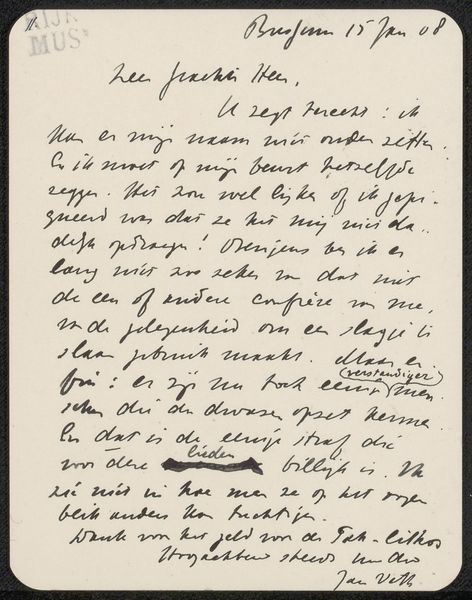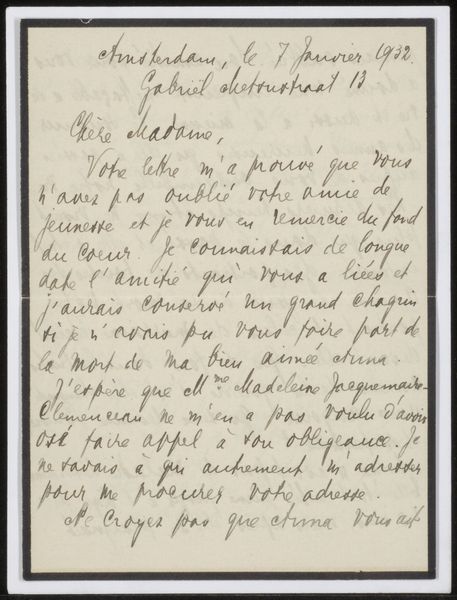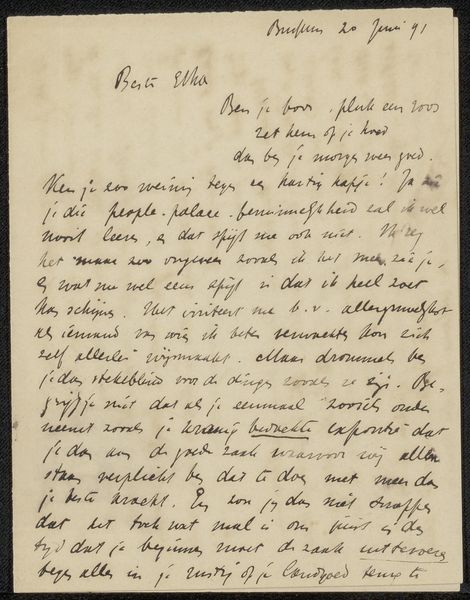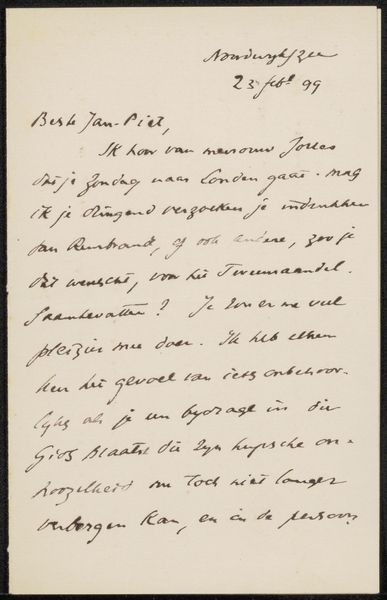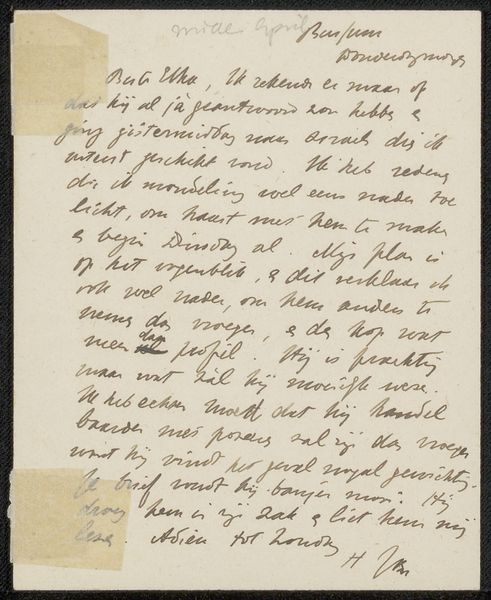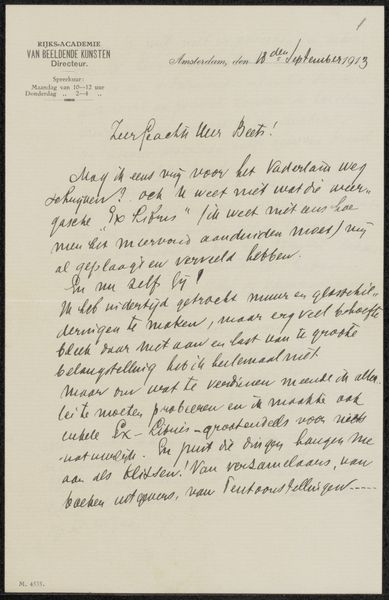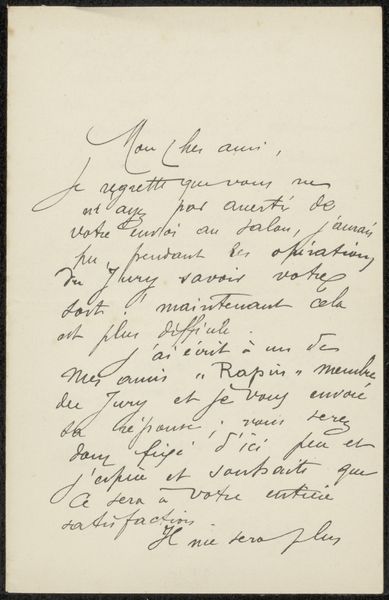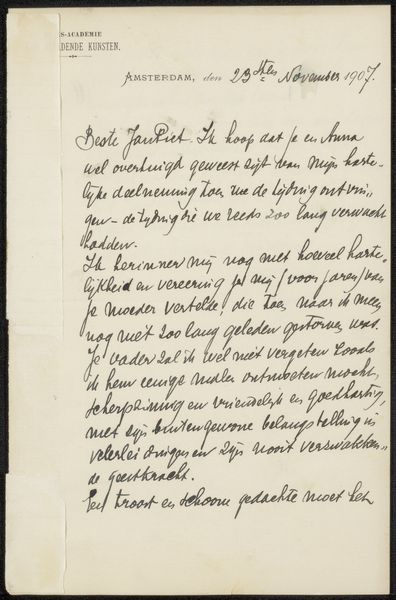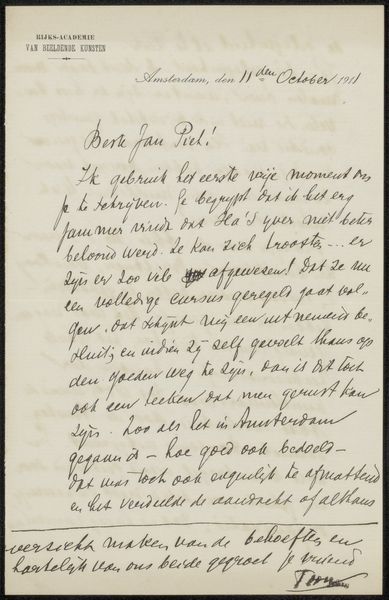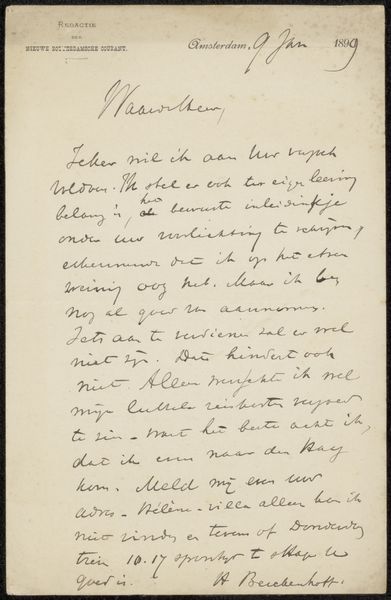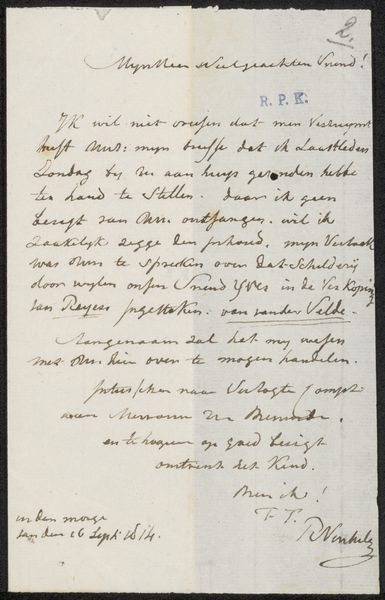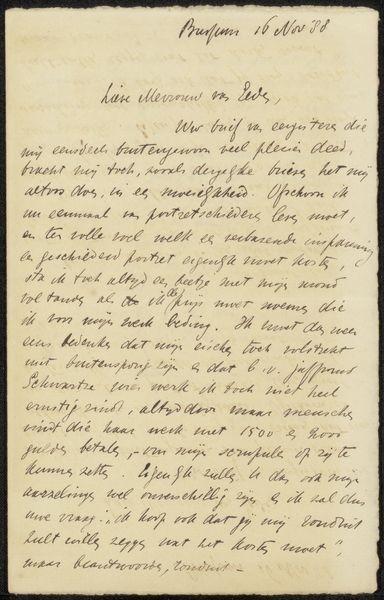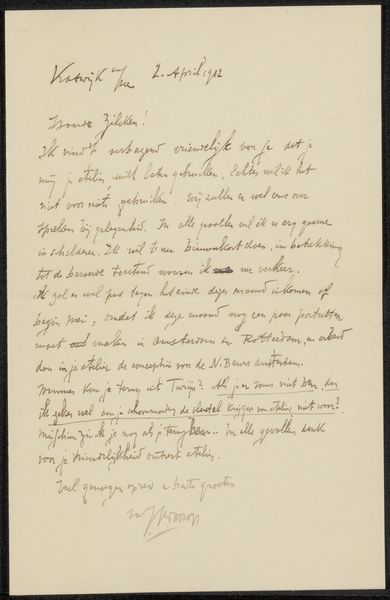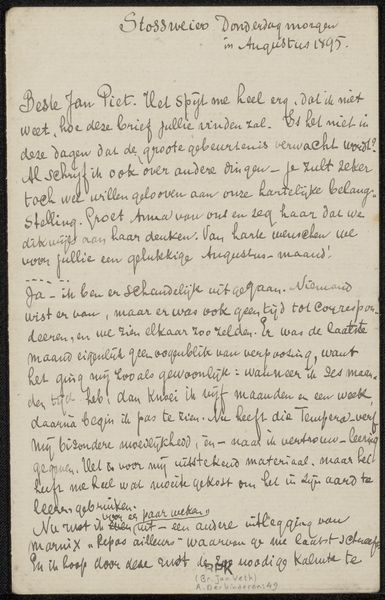
drawing, paper, ink
#
portrait
#
drawing
#
paper
#
ink
Copyright: Rijks Museum: Open Domain
Editor: So this is "Brief aan August Allebé" – possibly from 1909 – by Antoon Derkinderen. It's ink on paper, so, just a letter really, but it's in the gallery as a drawing. I am struck by the elegance of the handwriting; it feels so personal and crafted, even though its function is purely practical. What do you see in it? Curator: I see the commodification of correspondence. The act of handwriting becomes a performance of artistry, elevating a mundane object into a displayable artwork. Note the date, 1909. Mass production, and therefore wider consumption of cheaper paper and inks, was changing written communications. Derkinderen uses this medium as a subtle protest against this transition. How does this challenge our understanding of “drawing” versus “writing”? Editor: That's fascinating! I hadn't considered the social context of its production. So you are suggesting that by framing it as art, it elevates and gives value back to what was once, even then, commonplace and becoming devalued with mechanization? Curator: Exactly. Think about the materiality – the specific ink used, the texture of the paper. Each choice contributes to its meaning and how it stands in opposition to mass produced materials. Are there similar parallels with, for example, political pamphlets of the time, or commercial communications such as advertisements? How are these forms using the same or different materials? Are the materials themselves designed for longer life and preservation or not? And why? Editor: I see what you mean. The way he painstakingly formed each letter is now screaming out to me. I originally saw it just as simple beauty of handwriting, but now understand the social messaging is much deeper when looking at how the materials are working. Curator: Precisely! Thinking about art this way makes us question not only *what* is art, but *how* and *why* it's produced and then consumed, or indeed conserved in our case here, right? Editor: This perspective has really opened my eyes to the art and function inherent in everyday materials. Thanks!
Comments
No comments
Be the first to comment and join the conversation on the ultimate creative platform.
